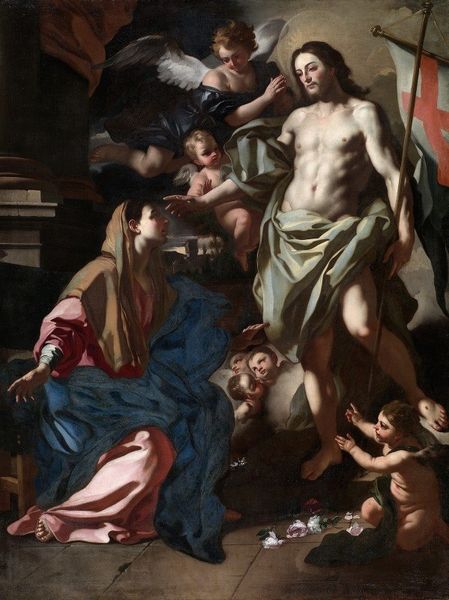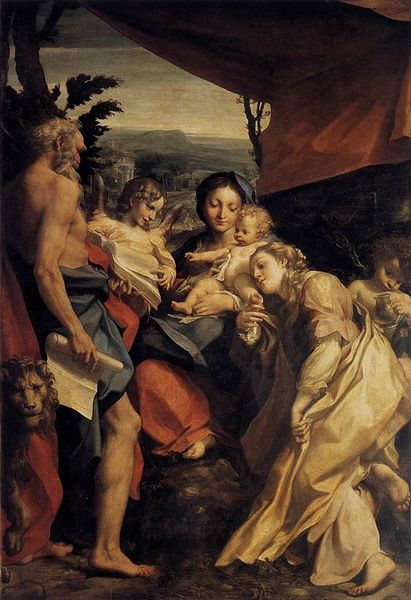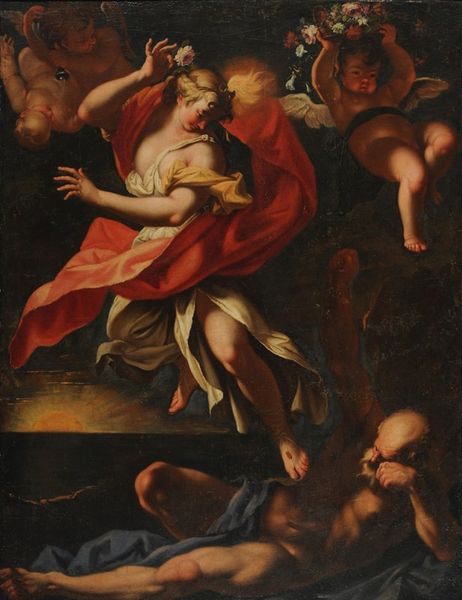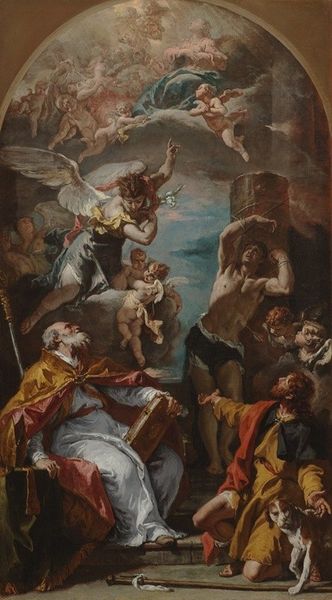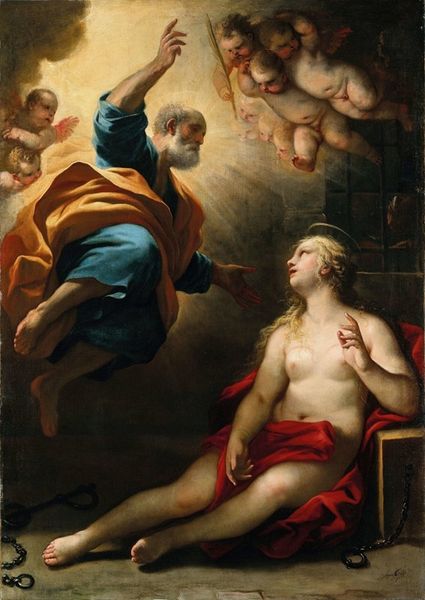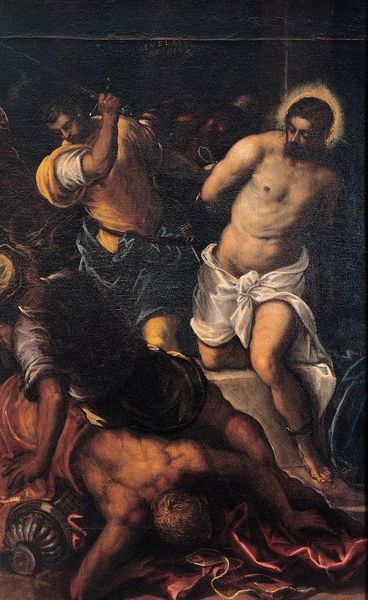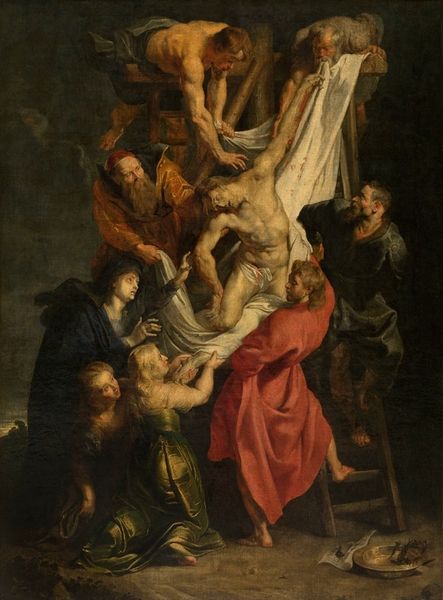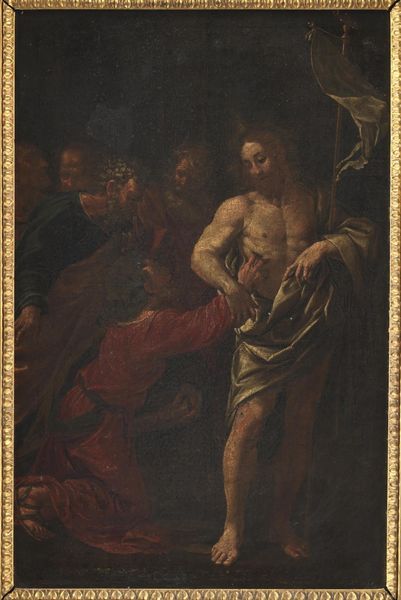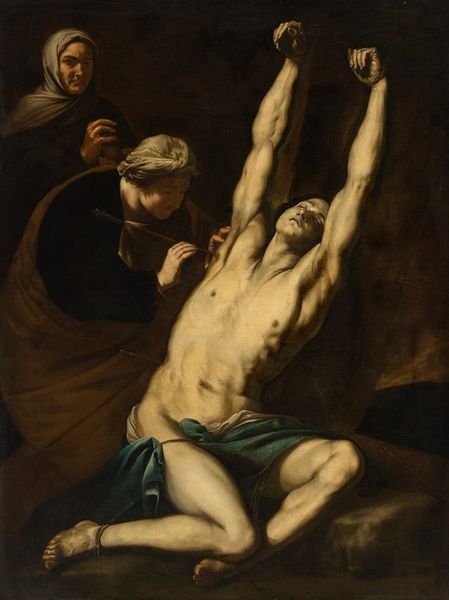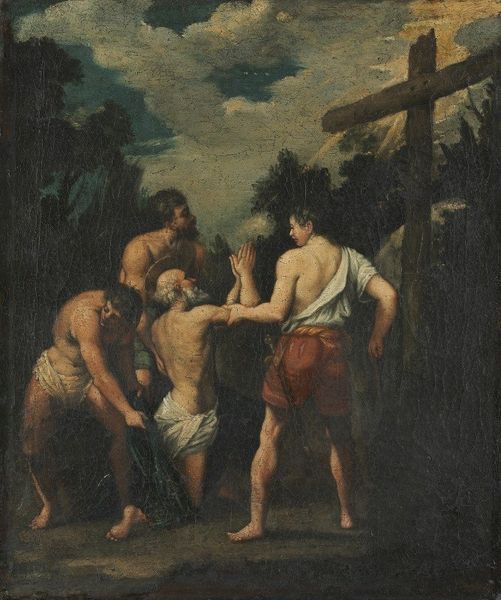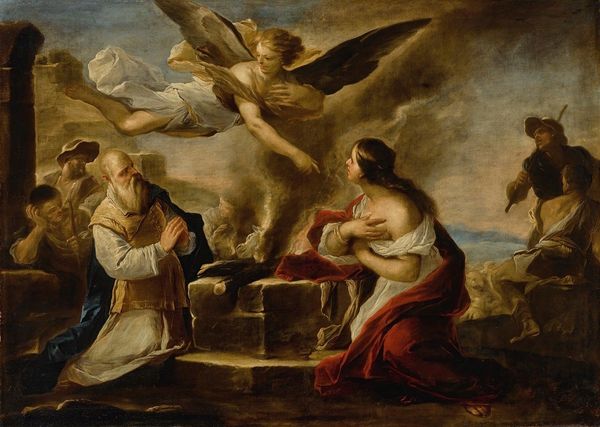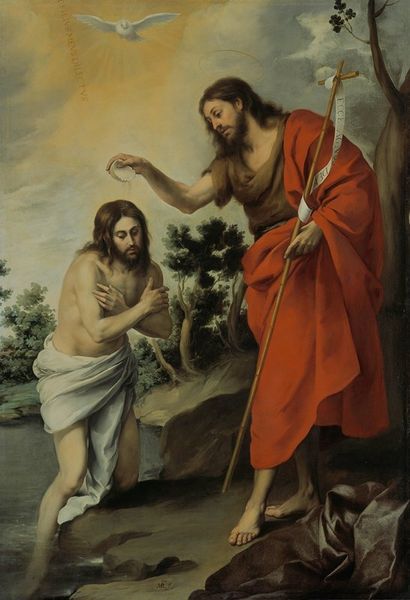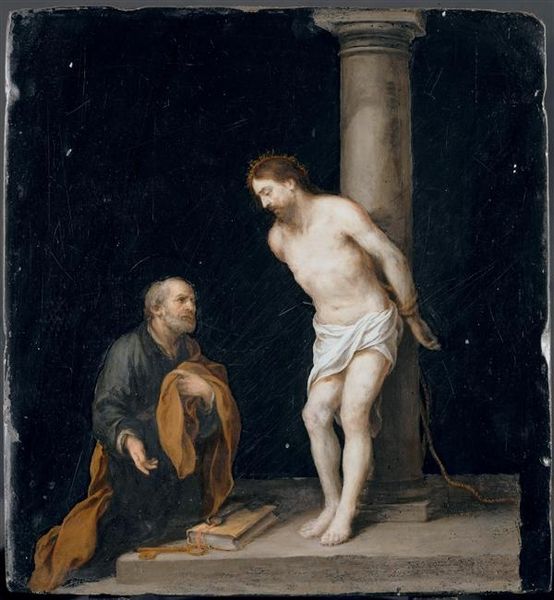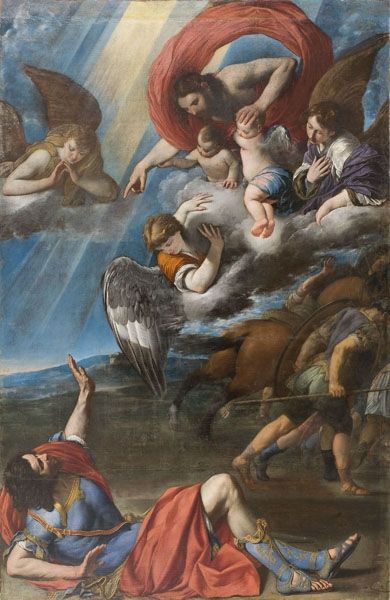
painting, oil-paint
#
narrative-art
#
baroque
#
painting
#
oil-paint
#
figuration
#
oil painting
#
history-painting
Copyright: Public Domain: Artvee
Curator: This oil painting, attributed to Francesco Solimena, depicts "Noli Me Tangere." Editor: Immediately, I’m struck by the swirling drama, like a baroque hurricane. The way the light catches the figures pulls you right in. Curator: Yes, Solimena really leans into the theatricality. This scene captures the moment in the Gospels after the Resurrection when Mary Magdalene encounters Jesus, but doesn't recognize him at first. "Noli me tangere" translates to "Touch me not," Jesus's words to her. Editor: You can almost feel her desperation in the painting; reaching, pleading. There is such pathos, with that little container of burial unguent left aside. A world upended, and her own perception challenged. Did it not strike the artists as peculiar to give the most importnat, revelatory discovery about someone's life and death to a woman in his time? Curator: Her encounter carries incredible weight for us, but there is some thought that by painting the drama between Mary and Jesus, the painting offers an ideal view into not only his role but her part in history to come. The style adheres closely to baroque conventions, prioritizing the emotional experience and clarity, the "narrative" which is central in many artistic interpretations of this period. Editor: Right, the drama overrides any subtlety. Even the angels above, gazing down, look a little too much like gossipy cherubs rather than divine witnesses. Does this portrayal say more about Baroque ideals than spiritual truth, do you think? Curator: Well, Solimena's style certainly emphasizes the spectacular. Art's public role in the Baroque era was often about communicating specific messages. I also feel this image speaks to the power of the institutional frameworks shaping even a moment such as this; commissioning religious works for certain settings certainly directs how artists interpret spiritual experiences. Editor: It’s fascinating to consider how Solimena translates faith into such a visceral, human moment. This wasn’t just theology to him; it was a story, with Mary Magdalene at the very heart. Curator: Agreed. “Noli Me Tangere,” when approached this way, becomes more than an artistic and theological piece – but a reflective consideration about the perception of a historic figure in this particular age.
Comments
No comments
Be the first to comment and join the conversation on the ultimate creative platform.
